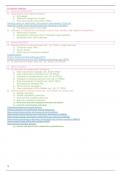Summary
Summary European taxation
- Course
- Institution
Summary of all lessons, powerpoint together with notes: everything you need to pass the exam (just learned this summary and got a good grade) Summary of all lessons, powerpoint put together with notes: everything you need to pass the exam (only learned this summary and got nice grade)
[Show more]



